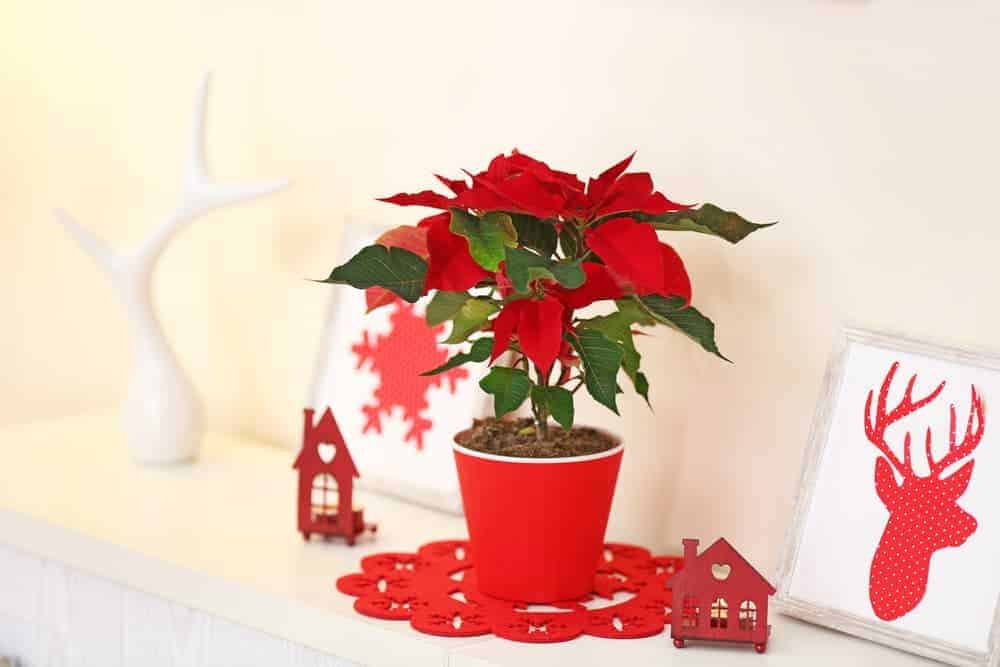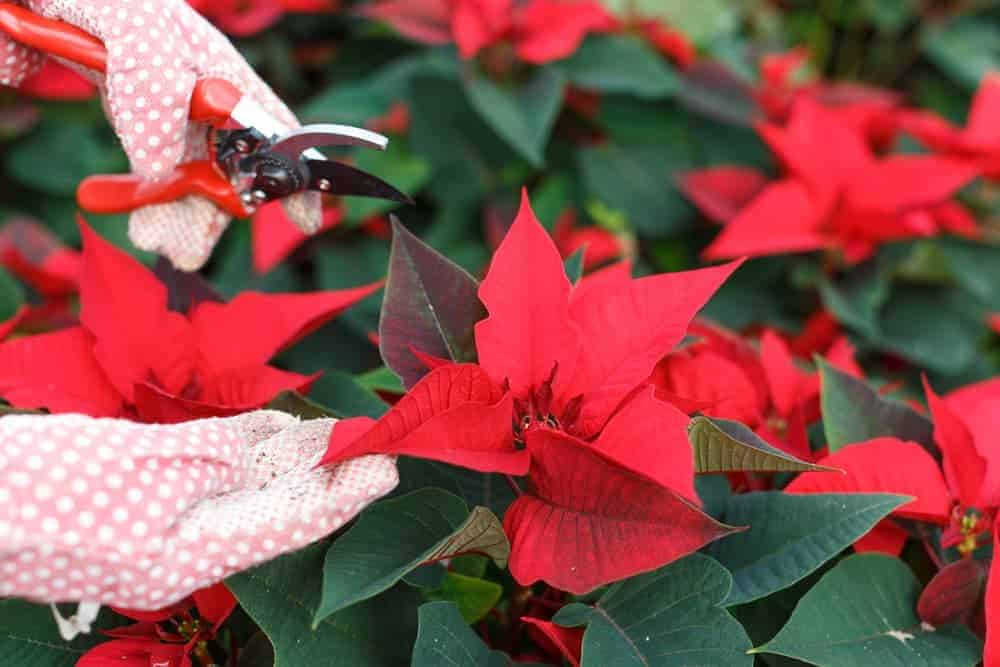The vivid colour of poinsettias is a quintessential part of the Christmas tradition. It’s a beautiful plant to add to any garden or to give as gifts. But care for poinsettia trees doesn’t stop after the festive season. You can even propagate them at home. Follow these tips on how to grow poinsettias to keep the Christmas spirit year-round!
How to Grow Poinsettias
Poinsettia (Euphorbia pulcherrima) is native to southern Mexico that naturally blooms in winter, with their green foliage and stems turning fiery red. Some varieties may also come in white or pink. These plants thrive in warm or subtropical weather.
Here in Australia, where Christmas falls on summer, poinsettias grow in temperature-controlled nurseries or greenhouses. Growers also shorten the days to make the plants think that it’s winter and it’s time to bloom. The best part is, they are easy to grow at home. Here are the ways how.
In the garden
- Look for the perfect spot. Poinsettias love a sunny area with half shade, where they can get about 6 hours of sun daily. Make sure it’s protected from strong winds, too.
- Dig for its planting hole. Use fertile and well-drained soil. Once you’ve selected your planting spot, dig a hole that’s twice as wide as your poinsettia tree. Its depth should be just about the same as the root ball size.
- Position your plant into the hole. Take your plant out of the container, carefully loosening its roots. Then backfill the hole and gently press the soil down.
- Add mulch around the base. Sugarcane, bark chips and pea straw are ideal organic choices. These should help retain soil moisture and prevent weed growth.
- Water and fertilise your plant. Make sure to care for poinsettia trees by watering them regularly. After watering, you can feed them with fertiliser every 1 to 2 weeks. Then, once they bloom, enjoy your Christmas garden in July!
In pots
- Choose the right pot. The pot should be about 40cm wide and deep, big enough to hold the root ball.
- Use a good quality potting mix. Soil should be well-drained and enriched with compost for healthy growth.
- Place your plant in the pot. Take your plant out of the container, carefully loosening its roots. Then backfill the hole and gently press the soil down.
- Find the perfect area. Place your potted poinsettia in a sunny spot with half shade. If you’re keeping it indoors, find a place where it can get 6 hours of indirect sunlight.
- Water and fertilise your plant. Water it well. After watering, you can feed with fertiliser every 1 to 2 weeks.
- Repot when necessary. Once your poinsettia has new shoots, make sure to transfer it to a bigger pot or your garden.

From Cuttings
- Wear gloves before pruning. Pruning poinsettias is ideal during spring and summer. However, keep in mind that cut poinsettia stems produce a sticky, white sap that can irritate the skin or cause allergies. Make sure to wash your hands, too, after handling the plant.
- Look for growing poinsettia tips. Using your pruning shears, cut the soft stem, about 20cm. Wash the cut end with fresh water to remove the milky sap.
- Allow roots to grow. Dip the cutting in rooting hormone then plant it in a pot of potting mix. Keep the soil moist (not wet) for several weeks to make the roots come out. Alternatively, you can make roots grow by setting the cutting in a pot of propagating mix or washed sand. Once roots have formed, you can then plant the cutting in potting mix.
How to Care for Poinsettia Trees
Poinsettias require minimal care. With ample sun and water, they’ll flower and thrive for years. However, you do need to care for poinsettia trees to keep them healthy and protected from insects. Here are some poinsettia facts and tips you should remember.
- Poinsettias dislike cool climates. During colder months, protect your potted poinsettias indoors. Just make sure they can still get enough sun. They should stay happy and thriving in temperatures between 20C and 25C.
- Poinsettias like potassium. To enhance the colour of your poinsettia flowers, give your plant some liquid fertiliser rich in potassium. Fertilise it all year every 3 to 4 weeks.
- Poinsettias need regular pruning and transplanting. Once winter is over, give your poinsettia a good trimming. Make 45-degree cuts to remove dead foliage or discoloured leaves and keep your plant bushy.
- Stop trimming your plant near the end of fall. The beginning of winter marks the start of its flowering period. Let it blossom and change into a beautiful shade of red.
- Watch out for pests. Aphids and whiteflies may infest your poinsettia plants. Use natural insecticides to control them. Make sure to use alternating insect sprays to avoid chemical resistance. Also, spray your plants early in the morning or late afternoon when the pests are resting. Fungus gnats may grow in the soil and result in root rot, too. Solve this with organic insecticides. If this doesn’t work, transplant your poinsettias in newly purchased potting mix.
How to Buy Poinsettia Trees for Gift Giving
Poinsettias make fabulous Christmas, Mother’s Day or housewarming gifts. Any gardening enthusiast will appreciate a pot of this low-maintenance plant. To ensure they’re ready for gift-giving, keep these tips in mind:
- Choose plants free from wilted leaf edges or damaged branches.
- Pick those with brightly coloured leaves and red bracts.
- Buy a plant with a balanced form that looks great on any angle.
- Look for closed yellow buds to keep your plant looking beautiful for longer.
- Do not let it stay in a cold car. Avoid open windows, heaters or fireplaces.
- A list of care instructions is a thoughtful gift tag idea!
Poinsettia trees will surely make your garden or home ready for the silly season. But for your “something bright and sparkly”, how about installing some outdoor lighting? We’ve got the ideas to help you decide which one is perfect for your space.


